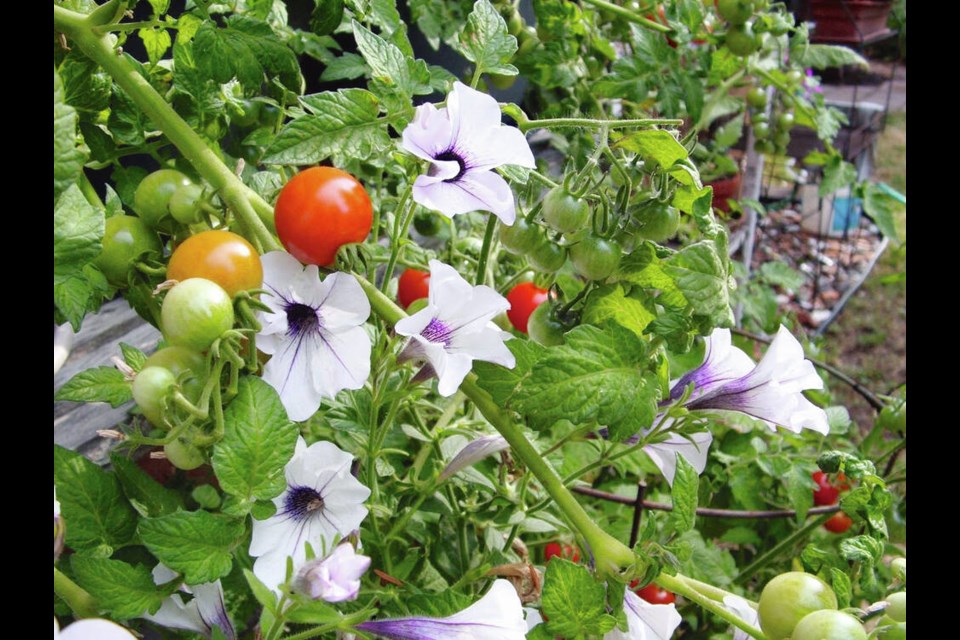Following my comments in recent columns about raccoons suspected of sleeping on the carrots and a bunny’s random nibbles in the garden, “critter” mail began arriving, with some useful tips.
Steve wrote with this account of raccoons in his garden: “Your story of the likely suspects in your carrot patch reminded me of my raccoon experience. I didn’t mind the family of four young raccoons feasting on the cherries in my tree this year, but I was concerned when they showed an interest in my beloved blueberries. After reading that raccoons don’t like certain scents, I spread used coffee grounds around the blueberry planting and added small jars of vinegar. Those measures seemed to work!”
Bunny tale. A series of rabbit observations arrived from Michael: “When I noticed my young pole beans losing leaves, I blamed cutworms, but when protective measures against them failed I checked my rabbit fencing, which I thought completely secure. I did, however, find one tiny place where a small rabbit could crawl under. Plugging that bit worked, but I set up my wildlife camera and sure enough the little devil was snooping around where he had been getting through.
“My large garden and orchard is deer fenced, but the vegetable garden area had to be rabbit fenced too. Where was my barred owl when I needed her?”
Owls and rabbit fences. Michael’s account reminded me of one of the great rabbit years in my neighbourhood. Rabbits everywhere. And owls. Huge owls perched silently in the trees and large shrubs close to the kitchen windows. They were fascinating and impressive, especially as they swooped down from their perches in eerie silence.
That summer, I was wakened from a deep sleep one night by a terrifying scream in the back garden. A rabbit, I think, taken by one of the owls.
Where rabbits abound, critical food plants do need to be secured by an exclusion fence, ideally 60 cm high and dug into the ground 10 to 15 cm deep. Rabbits can jump, and they can burrow into the earth. The mesh should be no larger than 2.5 cm. Chicken wire is useful for this purpose.
Food and flowers. They’ve been worth waiting for, those juicy, tangy morsels dotting the potted tomatoes on the patio. Varieties that routinely begin to ripen at mid-July were two weeks late this summer — and enjoyed all the more for the wait.
At some point every August, I give up trying to keep everything pristinely tidied and propped. Sometimes, this letting go produces results that are charming.
Early in the summer, I keep wayward stems on the patio tomatoes propped up with slim stakes. A failure to keep doing this has led to tomato-laden growth drooping down from the pots’ shelving to rest among the containers of petunias blooming below, for a rather appealing display.
The squash journal. A few of my Italian ridged (Romanesco) type zucchinis were slightly misshaped this summer, but they were still delicious, with a typical nutty flavour.
Two other types of summer squash have been close to perfection. Again this year, Deema, a Middle Eastern squash with cream-mottled, pale green skin and a slightly blocky, tapered shape, has produced beautiful, creamy-textured squashes that are traditionally eaten very small or left to grow larger for stuffing.
I’m a fan of Italian climbing squash, whose various strains are known by different names. In recent years, I’ve had difficulty producing really good, productive vines. This year, I tried a version new to me — Trombetta di Albenga, from Renee’s Garden. Like all the Renee’s seeds I planted this year, these exploded into strong growth to produce the kind of transplants gardeners dream of. The lush vines are now laden with long, slender fruits that look like decorations.
This is a wonderful slicing squash, with all the seeds collected at the far, blossom end. The flesh is firm, with a hint of artichoke flavour. Unlike many types of zucchini, it does not become mushy when cooked.
GARDEN EVENT
VHS meeting. The Victoria Horticultural Society will meet on Tuesday, Sept. 6, from 7 to 8:30 p.m. in the Garth Homer Centre, 813 Darwin Ave. Andy MacKinnon, co-author of the Royal B.C. Museum guidebook Mushrooms of British Columbia, will speak about mushrooms and fungi. Masks are required in the Garth Homer Centre. Non-member drop-in fee $5. For more information, visit vichortsociety.org.



